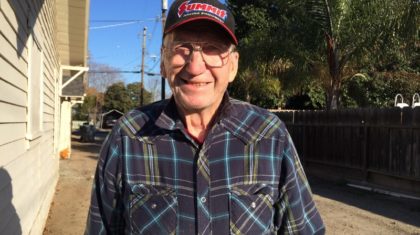
The Significance of Design Guidelines for Small Towns and Rural Communities
Until recently, photographs showcasing best practice bicycle and pedestrian design throughout the US had something missing. Design guidelines generally featured transit lanes, five story buildings, and wide sidewalks; all contemporary and innovative facilities were considered to be “urban” in nature. Missing from the conversation were smaller community and rural settings. Inspiration for engineers and planners in small towns was far and few between, with previous guidelines failing to reflect their reality.
Complete with visualizations and flexible design guidance for contemporary walking and bicycling facilities, the newly-released, Federal Highway Administration-endorsed Small Town and Rural Multimodal Networks guide fulfills the need and desire to make active transportation safer in small towns, suburbs, and rural communities.

By putting contemporary walking and bicycling facilities in a context that resonates with smaller communities, the Small Town and Rural Multimodal Networks guide offers a seat at the table for rural areas and smaller communities to showcase best practice design.
It addresses challenges specific to rural areas, recognizes how many rural roadways are operating today, and focuses on opportunities to make incremental improvements despite the geographic, fiscal, and other challenges that these smaller communities face.
The Road to Creating the Guide
The inception of this guide started back in 2010 when the United States Department of Transportation Policy Statement on Bicycle and Pedestrian Accommodation Regulations and Recommendations was released. This memo included a bold proclamation: “The United States Department of Transportation encourages transportation agencies to go beyond the minimum requirements, and proactively provide convenient, safe, and context-sensitive facilities that foster increased use by bicyclists and pedestrians of all ages and abilities…”. The Institute of International Engineers (ITE), National Association of City Transportation Officials (NACTO), and the Federal Highway Administration (FHWA) all responded to this call for design flexibility and multimodal facilities in earnest, but most resources were specifically focused on urban street design.
In 2015, Blue Cross and Blue Shield of Minnesota and FHWA funding came together for the development of a resource for active transportation design guidance in small town areas. Alta lead the production of the guide, determining how to fit existing and new guidelines into the rural context.

Significant Content
Not only does the guide translate existing national design guidance in a rural setting, it provides new, groundbreaking design guidance. For example, advisory shoulders create usable shoulders for bicyclists and pedestrians on a roadway that is otherwise too narrow to accommodate them. The shoulder is delineated by dashed line striping and optional contrasting pavement. Motorists may only enter the shoulder when no bicyclists or pedestrians are present and must overtake these users with caution due to potential oncoming traffic.
The Small Town and Rural Multimodal Networks guide provides the first US guidance for the use of advisory shoulders. As of early 2017, there are fewer than 20 installations in North America. Alta staff are working to develop a white paper to evaluate lessons learned from these existing advisory shoulder facilities.

Case Study Features
The guide also contains examples of peer communities and project implementation for the featured facility types throughout the guide. Case studies in the document include a project description, community context, key design elements, role in the network, and funding details.

By connecting communities to real stories, the guide passes on key lessons learned, including project triumphs and challenges.
On July 13, 2017, Alta hosted a webinar on the Small Town and Rural Multimodal Networks guide that featured two of the case studies from the guide.
Potential Impact of the Guide
Tim Gustafson, Senior Planner and head of the Chicago Alta office, is excited to see the guide help empower small town and rural communities. Gustafson was an editor for Best Design Practices for Walking and Bicycling in Michigan and Evaluating Pedestrian Safety Improvements for the Michigan Department of Transportation. He sees the new guide as a powerful resource to begin the discussion of what is possible in shaping roadway networks in small towns. “For some, it is my hope that they are better supported by the content in the Small Town and Rural Multimodal Networks guide to make decisions on their own local roadways, possibly with lower costs and more rewarding results knowing how much flexibility they have,” said Gustafson.
The Small Town and Rural Multimodal Networks guide gives small communities more confidence in the design of walking and bicycling networks. The guide offers smaller scale places a seat at the table to showcase best practices in bicycle and pedestrian design.

Technical Trainings
Alta staff have developed a variety of technical trainings and workshops, covering diverse street design subjects with a bicycle, pedestrian, and active transportation focus. Alta has led workshops on the Small Town and Rural Multimodal Networks guide across the country, including Washington, Oregon, Indiana, and New Hampshire.
We have developed training modules that guide professionals through network-scale and roadway-scale design exercises to teach the best and most appropriate application of facility types. Alta’s trainings range from full multi-day seminars to hour-long workshops and web-based curriculum.
For more information about technical trainings, please contact us.



